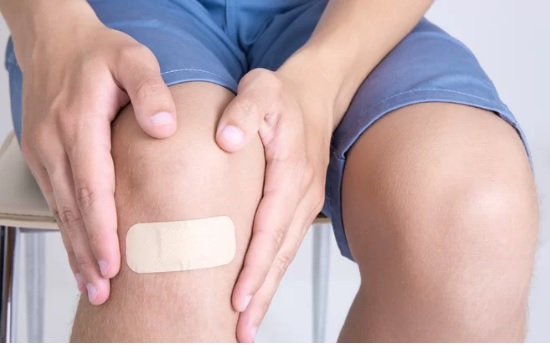The Surprising Reason Nighttime Injuries Are Worse Than Daytime Ones

Be careful of things that go bump in the night, especially if those bumps lead to skin injuries: A new study from England finds that skin injuries that happen at night heal more slowly than those that take place during the day.
Nighttime skin injuries heal about 60 percent slower than daytime skin injuries, according to the study, published today (Nov. 8) in the journal Science Translational Medicine.
The reason for this may lie in the circadian rhythms of the skin cells, which, like nearly all cells in the body, operate on a 24-hour cycle and go into a bit of a lull at night. But the researchers were even more surprised that not only does the healing process slow down at night, but also that the time of the injury completely determines how fast the injury will heal. [The Science of Jet Lag: 5 Surprising Findings]
"What we found is that how well you can heal depends on the time when you got injured," said lead study author Ned Hoyle, a molecular biology researcher at Cambridge University in the U.K. "The speed of the healing depends on how fast certain cells can get to the wounded area in order to repair it, and that depends on their micro-architecture, which is controlled by the biological clock."
To study the timing of wound healing, the researchers first looked at skin cells called fibroblasts that were grown in lab dishes over the course of several days, Hoyle told Live Science. These cells are found in the deepest layer of the skin, called the dermis. When an injury occurs, the fibroblasts travel up to the surface, where they're tasked with synthesizing and building the structural support of the new skin, which includes the so-called extracellular matrix and collagen.
But depending on the time of day, the speed at which the fibroblasts move up to the skin's surface varies, thanks to a protein found in the cells called actin, the researchers found.
Actin is a protein that forms an important part of the cytoskeleton — the supportive structure that gives the cell its shape. When the cells are told by their biological clock to "sleep," the shape of the actin proteins changes.
"We found that during daytime, the actin has mostly the form of long filaments, while at night, the majority of it is in a globular form," Hoyle said. "We know that the actin filaments are very important in allowing cells to move."
As a result of these changes, the fibroblasts travel to the site of the injury more slowly at night, when the actin is mostly spherical.
In a later experiment in the study, the researchers observed the same effect in the skin of mice.
And when the team looked at medical records of human patients recovering from burns, they found evidence of exactly the same phenomenon: "Wounds incurred during the day were, on average, healed in 17 days compared to the healing times of wounds incurred at night, which was 28 days," Hoyle said.
It's still not clear exactly why the nighttime wounds take longer to heal, however. The researchers originally expected the fibroblasts to make up for lost ground during the day, but that doesn't happen, Hoyle said.
"This is one of the most surprising results," Hoyle said. "What we see is a persistent 'time of wounding' effect. The cells wounded during the nighttime never catch up."
Hoyle said the finding could perhaps be used in the future to develop a technique to trick cells into thinking it's daytime, in case a procedure needs to be performed at night. Such interferences are technically possible, he added.
In addition, Hoyle said that he hopes to study the healing processes further, as they are extremely complex and involve many other cells and proteins beyond fibroblasts and actin.
very nice post